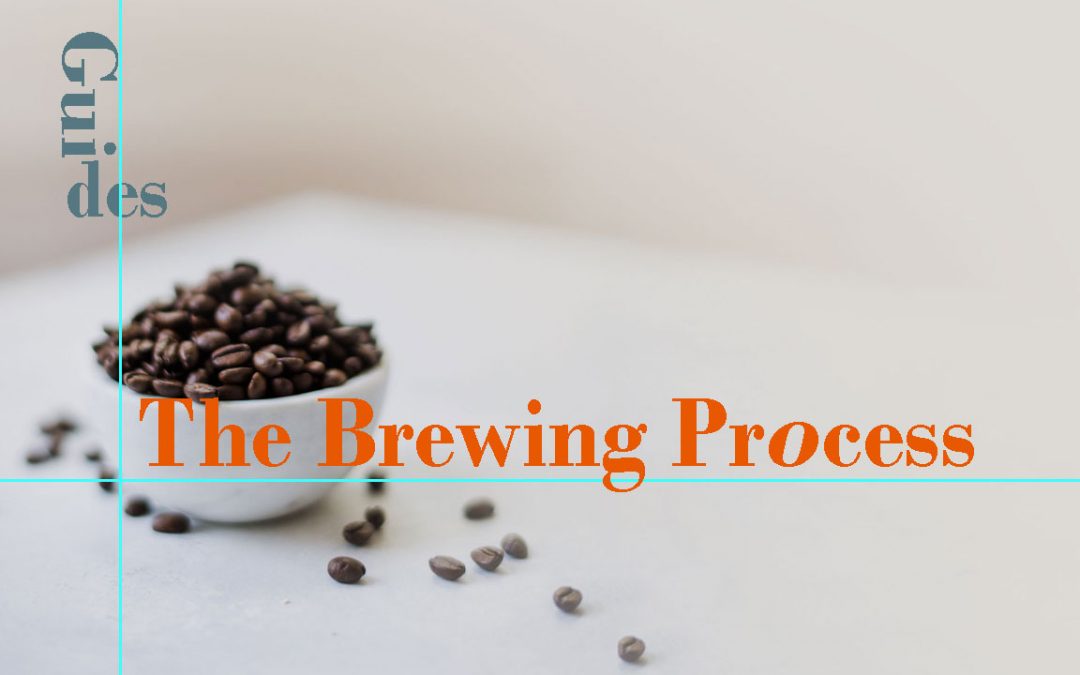The Brewing Process
In this video, we discuss the brewing process generally, with some specifics on certain methods. There are some great principles here that apply to all methods of brewing, and knowing these might empower you to enhance your cup of brew at home, whichever method (or methods) you prefer.
Overview:
Brewing coffee is the process of extracting the precious oils and flavors off of the now-roasted bean. There are three general elements for how this comes out, and it all comes back to the oil extraction: The size of the grounds, the temperature of the water, and the time that those two are in contact with each other. Hotter water will extract more of the oils, as will the reality of finer grinds. But, in this as well, there is a sweet spot: In the extraction process, certain oils will begin to come first, and certain others–carrying bitter flavors–will come after. So, you want to hit this target right: not too long, or not too short. –Or for that matter, put in a different way, not to fine of a grind, not too coarse. Likewise with water and time.
Brew Methods
There are a number of different brew methods. All accomplish roughly that same process, though there are some nuances between them. There are the full immersion methods, where the grinds are completely in contact with the body of water: French Press, AeroPress, and Siphon. The cupping process itself, is one of these. More commonly perhaps, are the drip methods: traditional brewers, the various pourover methods such as Chemex, etc. And then the high pressure makers, espresso and the like. Each of those will attempt to target the ideal amount of oil extraction from the grounds.
Ratios
In almost all of the cases, the good starting ratio is 1:17 — one part coffee to seventeen parts water. Again, this is an area that you can fine tune (along with grind size) to see what works best for your tastebuds. And for my part, this is one of the joys of coffee–it’s your process to tune. And you reap the reward of of the tweaking.
Appropriate to list here is the discussion of grind size again, but this time, to discuss grind size consistency. Very important to this process is a consistent grind size. And the more costly grinders (burr grinders, usually) are designed to create this uniformity (with this one inexpensive alternative). As you might imagine, if the grounds in your brew are a disparate mix of fine and coarse, some of them are going to extract too much, and some of them not enough. This cup will have missed the sweet spot of extraction both ways, resulting in added bitterness and thinness. It’s one of the more important things.
The Water
Ah, so this is perhaps more important than you might realize. Firstly, the ideal brewing temperature is about 200º. A good rule of thumb is to simply take it off boil for about a minute. If you have a good thermometer, all the better. BUT, there is an issue here that is not often discussed, and that’s the type of water you use. Coffee extraction requires minerality to work, and depending on how mineral-infused your water is (i.e., total dissolved solids) will very much affect your brew. Again, more minerality, more extraction; less minerality, less extraction.
On this count, Reverse Osmosis, or RO filters, are becoming increasingly popular, as are the various Zero Water type filters. But it’s important to understand what this will do to the brew process. It’s not necessary to abandon these; but it is highly helpful to understand this, and to incorporate that into your “tweaking” process. If you have the ability (French Press, etc), consider leaving the grounds in contact longer. If not, say in the case of a traditional brewer, consider using more coffee–or a finer grind.
For the Roaster
One interesting aspect of this is that, to some degree, Roasting is regional. What I mean by this is that roasters will prepare their beans, and quality control them on their water. Coffee brewed for Los Angeles for instance, with a very high minerality, will taste undesirable in Seattle, where the total dissolved solids (TDS) is very near distilled. Do you want to guess the result of this? Of creating a coffee to brew with high mineral content, and then brewing it with low mineral? That coffee will taste thinner in Seattle. The low TDS (relative to Los Angeles) will extract much more slowly.
Putting it all together
We hope that all of this will help you to understand the process a little better. And with this, to create that perfect brew, for your environment, and for your tastes. It’s all just right there in reach.

